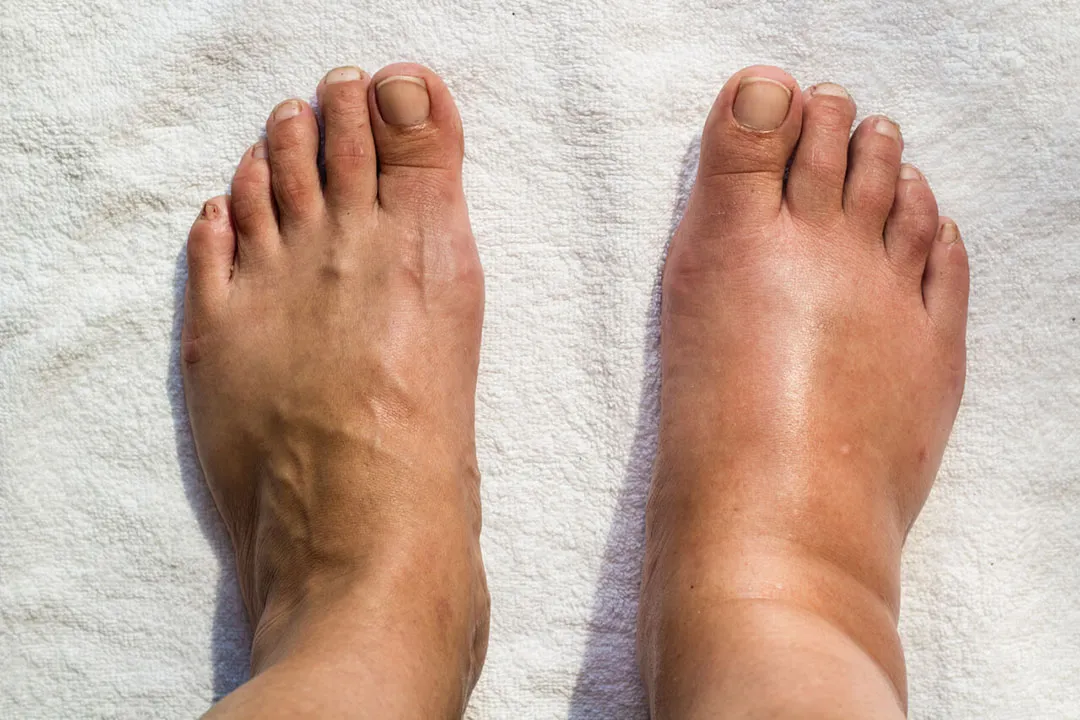Gout is a form of arthritis that can cause sudden and severe pain, swelling, and stiffness in the joints. While it can affect any joint in the body, it most commonly occurs in the big toe. When gout affects the foot and ankle, it can significantly impact mobility and quality of life. In this article, we will explore the symptoms, causes, and treatments of gout in the foot and ankle.
Causes and Risk Factors
Gout is caused by an accumulation of uric acid crystals in the joints. Uric acid is a waste product that is normally excreted from the body through the kidneys. However, in some people, the body produces too much uric acid or excretes too little, leading to a buildup of uric acid in the bloodstream. When uric acid levels are high, the acid can form crystals that deposit in the joints, triggering inflammation and pain.
Several factors can contribute to the development of gout, including:
- Diet: Foods high in purines, such as red meat, organ meats, and certain types of seafood, can increase uric acid levels and trigger gout attacks.
- Alcohol consumption: Alcohol, particularly beer and liquor, can increase the risk of gout by interfering with the body’s ability to excrete uric acid.
- Obesity: Excess body weight can lead to higher uric acid levels and an increased risk of gout.
- Medical conditions: Certain medical conditions, such as kidney disease, high blood pressure, and diabetes, can increase the risk of gout.
- Medications: Some medications, such as diuretics and low-dose aspirin, can increase uric acid levels and contribute to gout.
Symptoms
The hallmark symptom of gout is sudden and intense pain, often described as a throbbing or crushing sensation. This pain typically occurs in the affected joint and can be triggered by factors such as injury, illness, or dietary changes. Other symptoms of gout in the foot and ankle may include:
- Swelling: The affected joint may become swollen, red, and tender to the touch.
- Limited range of motion: Gout can cause stiffness and difficulty moving the affected joint.
- Warmth and redness: The skin over the affected joint may feel warm to the touch and appear red or purplish.
Treatment Options
The goal of treatment for gout is to reduce pain and inflammation, prevent future gout attacks, and lower uric acid levels in the blood. Treatment options may include:
- Nonsteroidal anti-inflammatory drugs (NSAIDs): These medications can help reduce pain and inflammation during a gout attack.
- Colchicine: Colchicine is a medication that can help relieve pain and reduce inflammation in the joints.
- Corticosteroids: Injections of corticosteroids may be used to reduce inflammation and pain in the affected joint.
- Lifestyle changes: Making dietary changes, such as avoiding foods high in purines and limiting alcohol consumption, can help reduce the risk of gout attacks.
- Medications to lower uric acid levels: Your doctor may prescribe medications, such as allopurinol or febuxostat, to lower uric acid levels and prevent future gout attacks.
In severe cases of gout that do not respond to other treatments, surgery may be necessary to remove uric acid crystals from the affected joint.
When to See a Doctor
Gout in the foot and ankle can be a painful and debilitating condition. However, with proper treatment and lifestyle changes, it is possible to manage gout and reduce the frequency and severity of gout attacks. If you are experiencing symptoms of gout, such as sudden and severe pain in the foot or ankle, swelling, or redness, it is important to seek medical attention promptly. A podiatrist can provide a comprehensive evaluation and develop a treatment plan tailored to your individual needs.
Our doctors at Stepping Stone Foot & Ankle Specialists can help determine which of the above treatment option is best for you. If you’re experiencing symptoms of Gout, don’t wait to seek treatment. Please contact our office to schedule an appointment today. Call us at (610) 672-8988 for a consultation or email us at info@steppingstonefootankle.com.
If you want to learn more about this condition or treatment options, please visit our website at www.SteppingStoneFootAnkle.com or Follow Us on our Facebook and Instagram pages.

